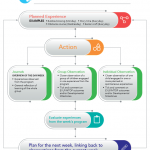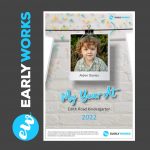Creating and Documenting Inclusive Learning Environments
READER ALERT! Inclusive learning is something I am passionate about. This is because I have clear memories of my mum having to fight to have my little sister accepted into a ‘special school’ to receive what should have been a basic right. Back in the seventies, children with disabilities were not automatically entitled to an education, and if they were fortunate enough to be granted a place, it was usually at a special school just for children with disabilities. Inclusive learning was something way off in the future.
Fast forward 40 years, and we live in a country where all children have the right to quality early childhood education amongst their peers. As Leonie Arthur, Bronwyn Beecher, Elizabeth Death, Sue Dockett and Sue Farmer point out in ‘Programming and Planning in Early Childhood Settings’ “All children, regardless of ability, should have access to and opportunities for success in the whole early childhood environment.”
So how can we document the adjustments we are making to ensure all children are able to participate in our programs? In EarlyWorks this is simple. When you create Experiences in EarlyWorks, you have the option of making those experiences visible to all families, or just those of the children you are planning for.
Some of the adjustments you make will enhance learning for all children, so you would make those experiences visible to all families. For example, you might:
- Incorporate sign language into your programs. This will not only enable children with communication challenges to fully participate in the program and interact with their educators and peers, according to Arthur, Beecher, Death, Dockett and Farmer, it enhances the learning of all children. “The children’s enjoyment, quick uptake and grasp of ‘another language’ increases support and understanding of communication challenges for everyone involved.”
- Use visual supports. Children who experience difficulties expressing emotions may require visual supports such as thumbs up or thumbs down icons to communicate feelings. These same visual supports might be used for all children to rate the menu.
- Visuals for the daily routine. Children on the autism spectrum may require visual daily routine charts to feel secure in knowing what is happening next. This visual routine may benefit all children in having a sense of their day and what to expect.
Other adjustments may just be for one child, so when documented, these experiences would be made visible only to families of children planned for. For example:
- Adjusting the layout of equipment. A child with a mobility frame may need more room to be able to easily access equipment.
- Extended transition times. Some children may require many visits to the service before they are ready to stay on without the security of family being present. Family members may also need this extended transition time to feel comfortable leaving their child.
- Sensory aids. Some children may need more opportunities for sensory input, so a scarf might be tied to their chair so that they can touch and feel it to stay engaged with what is happening around them.
Now you may be thinking, how am I supposed to know what adjustments are appropriate for a child in my care? There are likely to be allied health professionals already working with the family who will be able to support educators in making appropriate adjustments. These professionals can be provided with a family login to EarlyWorks for that child. This will allow open communication between the educators, the family, and the wider support network in ensuring each child can fully participate in the early childhood program.
One of the beautiful things about working in the early childhood space is the long-term positive impact we can have on the children and families we work with. This is particularly true when it comes to how we approach disability. There have been multiple studies that have shown that “early childhood is the best time to intervene against the formation of negative attitudes toward disability” (Factors Affecting the Perception of Disability: A Developmental Perspective. Iryna Babik & Elena S. Gardner, 2021). So, we may never know the extent of the impact on all children in our care when we make adjustments to ensure all children, particularly those with disabilities, feel safe, secure and supported.
The contents of this blog are relevant to the following elements of the National Quality Standard
QA1 Educational program and practice
1.1.2 Child centred
1.2.3 Child directed learning
1.3.3 Information for families
QA3 Physical Environment
3.2.1 Inclusive Environment
QA5 Relationships with children
5.1.2 Dignity and rights of the child
QA6 Collaborative partnerships with families and communities
6.2 Collaborative partnerships
6.2.2 Access and participation
This blog also supports educators and services in complying with the Disability Discrimination Act







